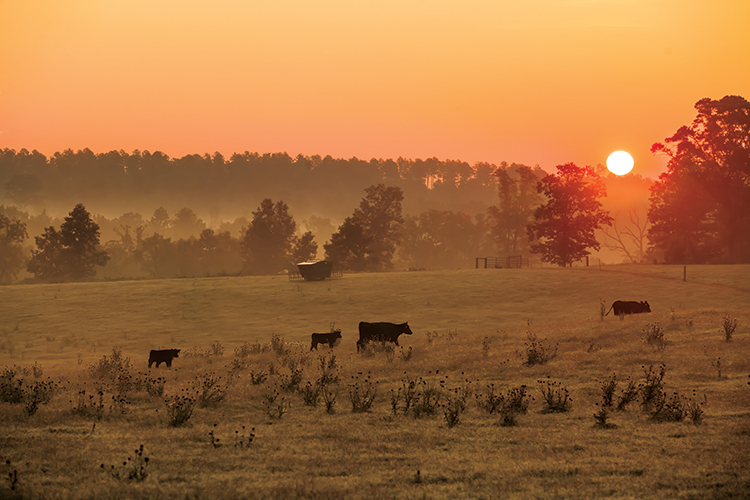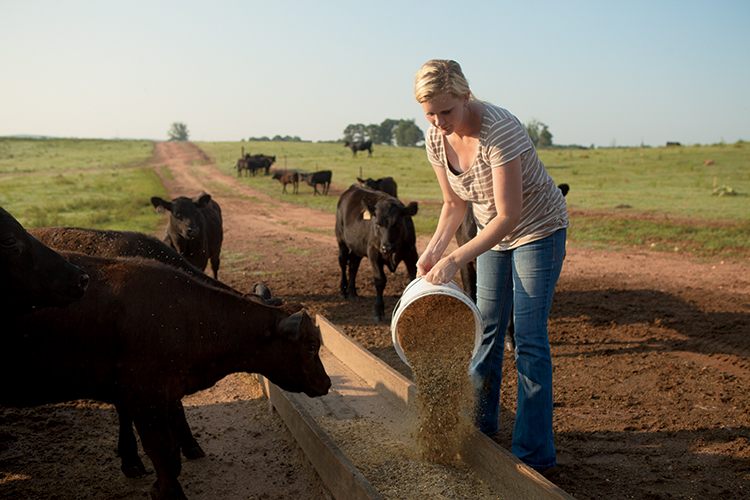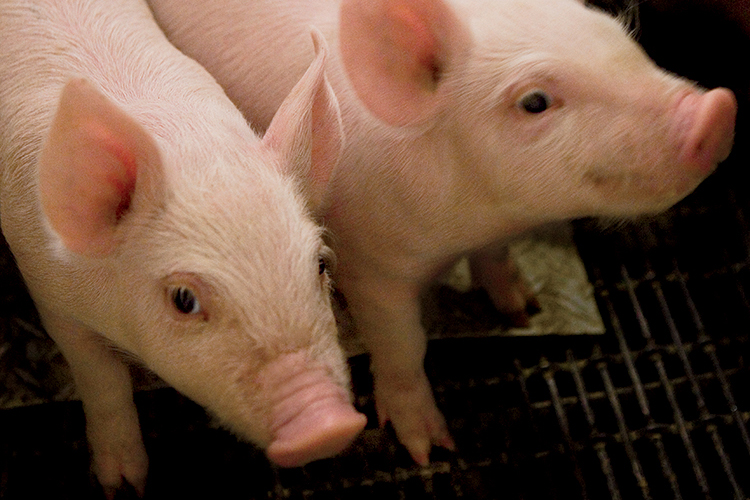Home > Georgia > Georgia Crops & Livestock > Raising Quality Georgia Livestock
Raising Quality Georgia Livestock

Whether you’re firing up the grill for a juicy steak or serving pork tenderloin to dinner guests, Georgia’s cattle and hog producers satisfy every taste with local flair.
“The main thing people want to know is where their meat comes from,” says David Whitehead, who raises cattle on the 1,200-acre Brush Creek Farm in Colbert. “Everything we sell is born and raised here on the farm.”
The Whiteheads sell their beef in 30-pound packages to customers all over northeast Georgia, as well as to local restaurants and other vendors. The Whitehead family’s 250 “mama cows” are part of the 480,000 brood cows counted in Georgia in January 2014. Georgia tallied 1 million cattle at that time, including younger bovines growing toward harvest weights. The beef industry provides a $2 billion annual economic impact in the state, according to Georgia Cattlemen’s Association.
Many Georgians raise cow-calf herds, historically sending calves west to be grain-fed in the Corn Belt. Though that is still the most common marketing practice, some cattle farmers are finding growing demand for beef fed in Georgia.

“We have 100 brood cows, raising 100 calves per year,” says Del Ferguson of Brooklet. He started Hunter Cattle Company with his wife, Debra, and her parents and brother about 10 years ago. It’s now a family operation with three generations working on the farm.
Hunter Cattle Company processes its own beef, pork and chicken in the farm’s United States Department of Agriculture inspected facility, selling meat locally and to restaurants in Savannah and Statesboro.
Georgia pastures can be grazed much of the year.
“We move our cattle from one field to another, using rotational grazing,” says Ferguson, who feeds his cattle grass from birth until slaughter. Whitehead uses a similar grazing system, and also feeds corn and other feedstuffs purchased locally. “We like to say that we feed our beef the old-fashioned way, using real commodities [crops],” Whitehead says.
Green Grazing
Georgia’s pastures can also support hogs.
“Our hogs are always on something green,” says Andrew Thompson of Thompson Farms Smokehouse in Dixie. He keeps about 350 sows on ryegrass in the winter and millet in warmer months, raising more than 4,000 pigs for market.
Georgia’s swine herd of 155,000 produced about $65 million of pork in 2012.
Pork production methods in the state include hog barns designed to feed large numbers of hogs as well as pasture-based systems like Thompson’s and Hunter Cattle, who produce pork along with beef.
Thompson Farms opened its smokehouse in 2004 with one employee. The business now includes a processing facility, employing 18 full-time and some part-time help. The farm processes all of its own animals and some hogs from nearby farms.
Andrew Thompson and his wife, Jenifer, raised their family on the farm and say their son is very interested in staying involved in the farm’s future. The family business, Andrew says, is a progression of their farm history.
The late Raymond Thompson enjoyed helping tend the farm store.
“It was Daddy’s passion to start the smokehouse,” Thompson says. “We think consumers are becoming more and more interested in hogs raised the way we can raise them here.”




